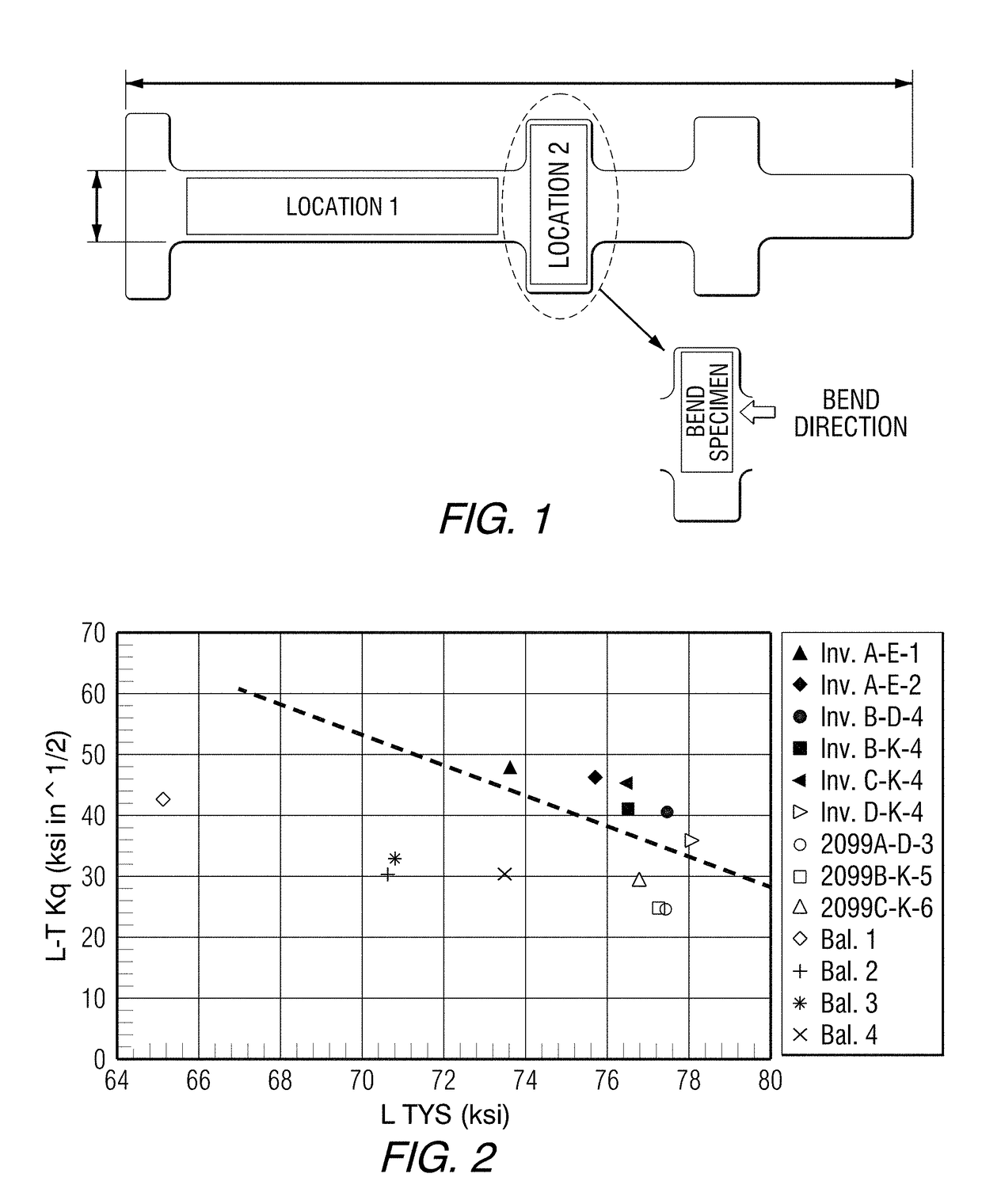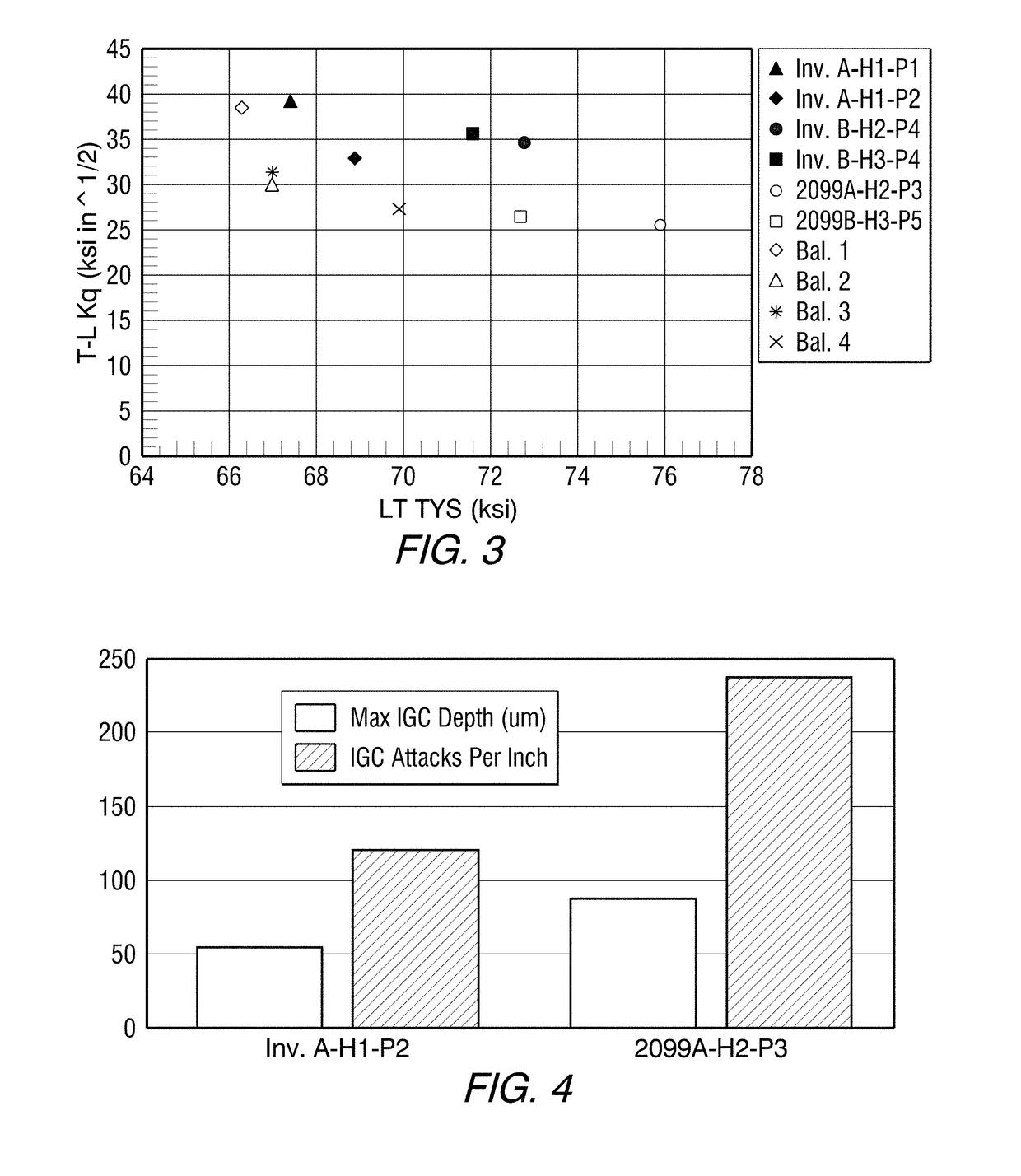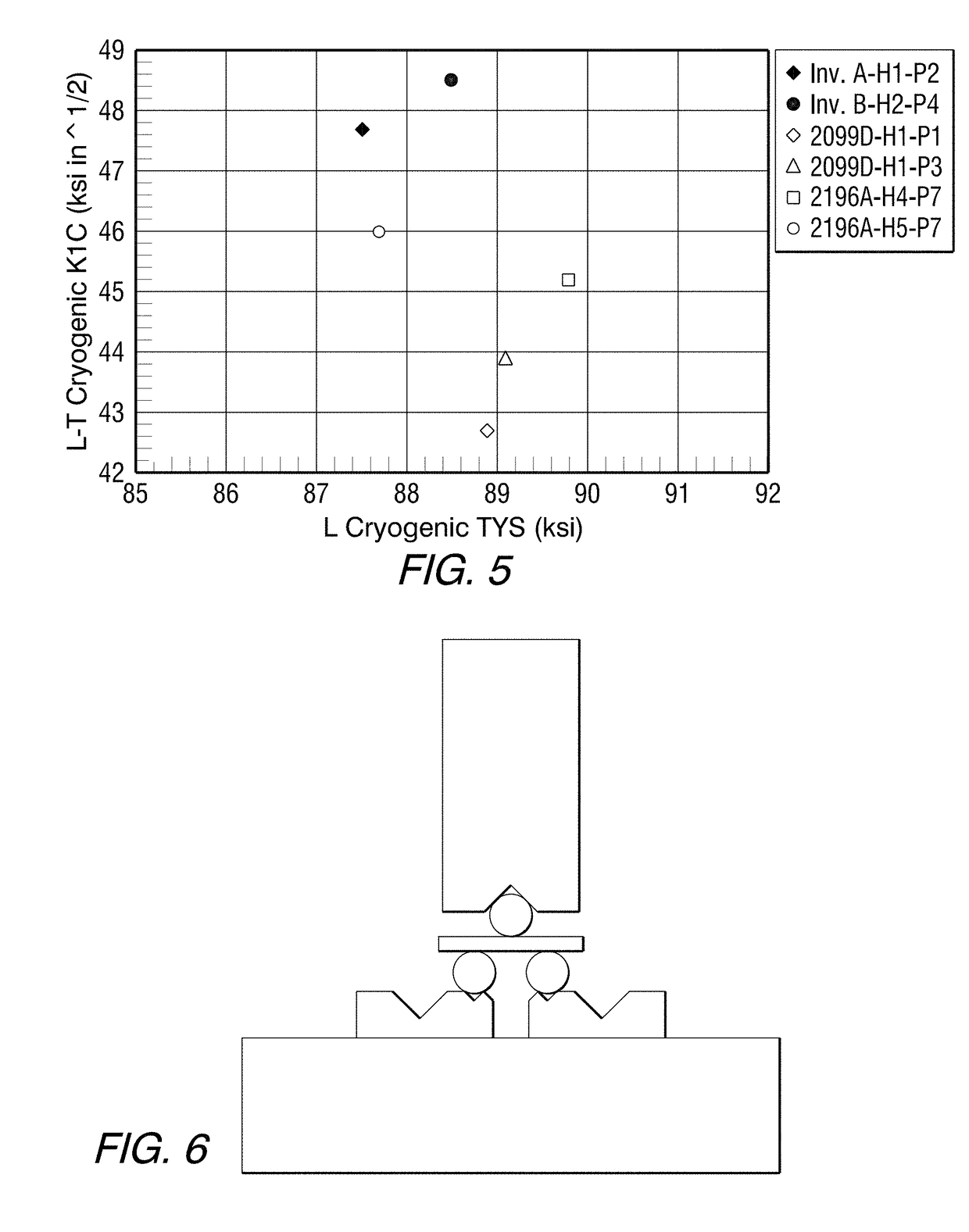Low density aluminum-copper-lithium alloy extrusions
- Summary
- Abstract
- Description
- Claims
- Application Information
AI Technical Summary
Benefits of technology
Problems solved by technology
Method used
Image
Examples
example 1
[0092]In this example, several billets of Al—Cu—Li alloy wherein the composition is given in Table 2 were cast. Alloy Inv. A, Inv. B, Inv. C, and Inv. D are embodiments of alloys of the present invention. Alloys 2099A, 2099B, 2099C, and 2099D represent alloys falling within the registered Aluminum Association limits of AA2099.
TABLE 2Results of chemical analysis of billets in weight percentAlloyCuLiMgMnZnAgSiFeZrInv. A2.891.540.200.040.01—0.040.030.10Inv. B2.751.640.360.13——0.030.050.11Inv. C2.781.660.340.140.01—0.030.040.10Inv. D2.841.680.350.16——0.030.050.112099A2.581.670.280.340.69—0.020.040.102099B2.721.740.280.300.72—0.030.050.112099C2.681.750.260.300.70—0.030.050.112099D2.791.670.310.300.69—0.030.030.10
[0093]The billets were homogenized according to the practices in Table 3. Billets of alloy Inv. A was homogenized according to practice H1 (835° F.—2 Hours followed by 860° F.—2 Hours followed by 950° F.—12 Hours). Billets of alloy Inv. B were homogenized according to either prac...
example 2
[0101]In this example, alloys from Example 1 were homogenized and hot extruded into the body shown in FIG. 1. Alloy Inv. A was homogenized according to practice H1 before being hot extruded and undergoing post plastic deformation process P2. Alloy Inv. B was homogenized according to practice H2 before being extruded and undergoing post plastic deformation process P4. Alloy 2099D was homogenized according to practice H1 before being hot extruded. Extrusions of 2099D were then subjected to post plastic deformation processes P1 and P3.
[0102]Additionally, billets of alloy 2196A, whose composition falls within the registered Aluminum Association limits for AA2196 and can be seen in Table 9, were cast. The billets were then homogenized according to practice H4 (835° F.—2 Hours followed by 860° F.—6 Hours followed by 950° F.—4 Hours followed by 970° F.—22 Hours) or H5 (835° F.—2 Hours followed by 860° F.—6 Hours followed by 950° F.—4 Hours followed by 970° F.—8 Hours), which can be seen in...
example 3
[0104]In this example, alloys from Examples 1 and 2 were homogenized and hot extruded into the body shown in FIG. 1. Alloy Inv. A was homogenized according to practice H1 before being hot extruded and subsequently processed according to practice P2. Samples of Alloy Inv. B were homogenized according to either practice H2 or H3 before being hot extruded and subsequently processed according to practice P4. Alloy 2099A was homogenized according to practice H2 before being hot extruded and subsequently processed according to practice P3. Alloy 2099B was also homogenized according to practice H3, but was processed according to practice P5 after being hot extruded. Alloy 2196A was homogenized according to practice H4 before being hot extruded and subsequently processed according to practice P7.
[0105]Samples measuring 0.787 in×0.394 in×0.079 in (20 mm×10 mm×2 mm) were then taken from location 2 as labeled in FIG. 1 in the S-T direction and then subjected to a standard DIN three-point bend ...
PUM
| Property | Measurement | Unit |
|---|---|---|
| Temperature | aaaaa | aaaaa |
| Temperature | aaaaa | aaaaa |
| Temperature | aaaaa | aaaaa |
Abstract
Description
Claims
Application Information
 Login to View More
Login to View More - R&D
- Intellectual Property
- Life Sciences
- Materials
- Tech Scout
- Unparalleled Data Quality
- Higher Quality Content
- 60% Fewer Hallucinations
Browse by: Latest US Patents, China's latest patents, Technical Efficacy Thesaurus, Application Domain, Technology Topic, Popular Technical Reports.
© 2025 PatSnap. All rights reserved.Legal|Privacy policy|Modern Slavery Act Transparency Statement|Sitemap|About US| Contact US: help@patsnap.com



